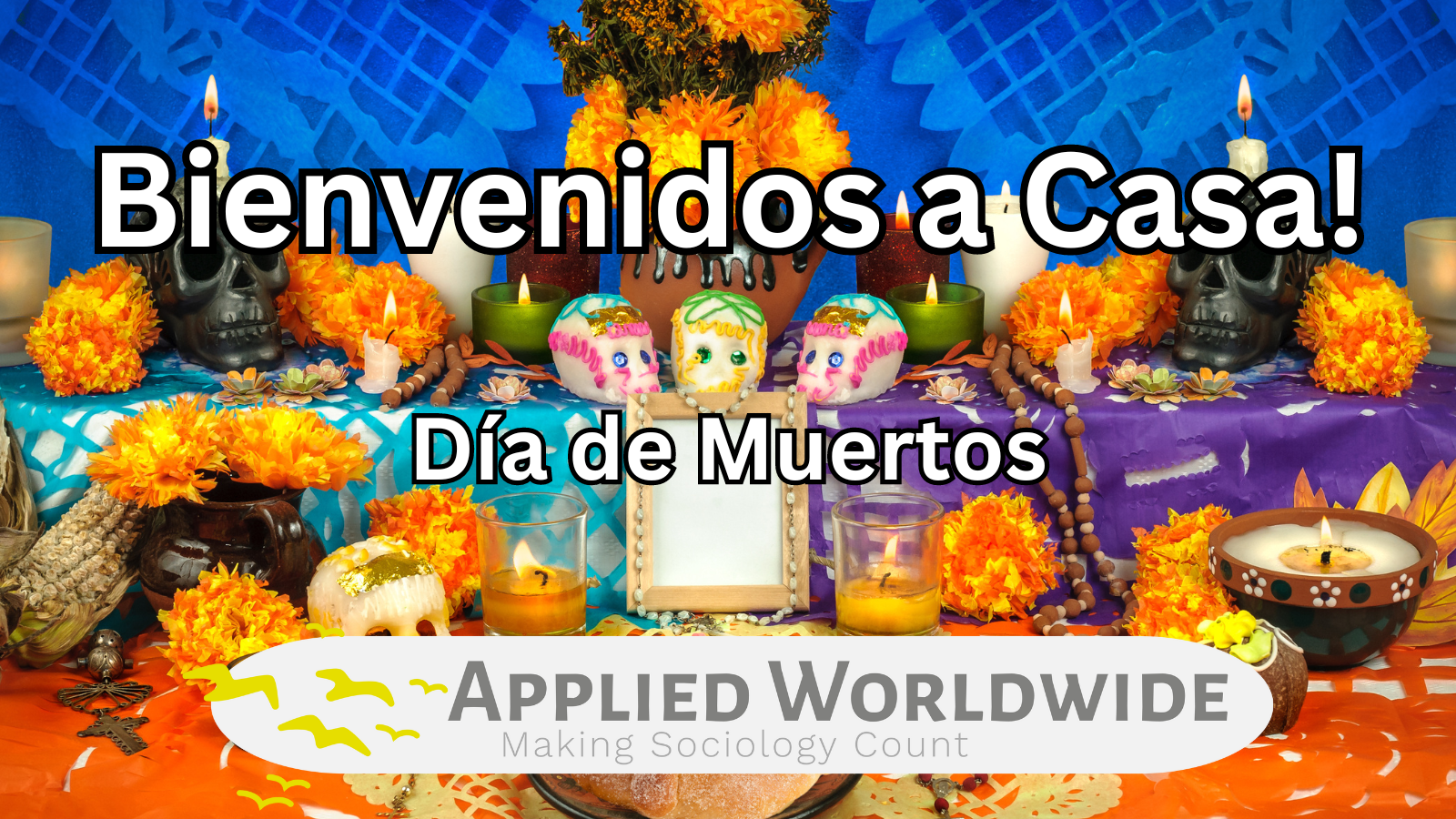Sacred Objects that Generate Social Cohesion in Mexican Society
El Día de Muertos in Mexico is a celebration full of flavors, colors, music, aromas and joy in the country. All over the world the celebration is known for the symbols linked to death: tombs adorned with a variety of colors; music and laughter run through the cemeteries; altars full of offerings to the dead; representations of skulls everywhere, even in children’s mouths.
The fascination of Mexicans with death intrigues other societies. How Mexicans can be happy in a situation with symbols considered macabre, gloomy and sad. This article seeks to reflect on two questions: how do Mexicans associate death with happiness? What is the mechanism that replaces sadness or fear with happiness on the subject of Death?
Origins of Día de Muertos
The origins of the holiday dates back a long time. According to works such as that of Stanley Brandes, the diversity of customs and traditions that permeate this practice make it difficult to trace an exact time and place. One of the most accepted is that it is the product of a syncretism between the Catholic religion and Mesoamerican beliefs, since the celebration was made to coincide during the colony with the celebrations of Día de Todos los Santos and the Día de los Fieles Difuntos.
There are those who link it with pre-Hispanic harvest festivals, hence the abundance of color and food, typical of other celebrations linked to fertility and the cycle of death and rebirth. Others suggest that the celebration was part of Mexico’s identity processes to distinguish itself from other countries. This began to take shape in the first years of independent Mexico and the contemporary festival as we know is from post-revolutionary Mexico.
At present, under the popular belief, el Día de Muertos welcome the little deceased ones on November 1, and the next day the grown up. Although officially it is these two days, preparations usually begin on the night of the last day of October to receive the little ones in the first hours of November. In some communities the celebration can begin even days before and end days after.
Rituals, Solidarity and Emotional Energy
What is undeniable is that the celebration has a high load of symbols that distinguishes it from other celebrations related to death. This process generates in Mexicans a feeling of unity and solidarity that reinforces community ties as expressed by sociologist Émile Durkheim.
If we consider what is proposed by Randall Collins, the emotional energy that Mexicans produce through this chain of three-day interaction rituals, converts a situation usually gloomy and sad, in one of joy. The emotional charge in Día de los Muertos causes Mexicans to forget for a moment deference and fear of Death.

Unlike other rituals linked to death such as funerals, el Día de Muertos is a national holiday, celebrated not only privately among the relatives and friends of the deceased, but by a whole set of diverse communities that celebrate simultaneously a ritual loaded with multiple meanings through two days.
The nodal point of the ritual consists of honor in an extraordinary way the memory of the deceased who are not in the everyday world of the living. The Mexican feels accompanied by both his contemporaries and his ancestors during the time of this ritual.
From a phenomenological point of view the symbolism makes different temporalities converge in the everyday world. Through stories, food, music and other manifestations of coexistence face to face, the barriers between the past and the present are temporarily erased in a symbolic way.
Memory and Family: Celebrating Día de Muertos
Although the celebration is what most transcends in Día de Muertos, the essence of the celebration lies in Mexican families, who remember their ancestors with objects related to the family member, as well as food and music that brings the family together around an altar that represents the deceased persons.
These spaces serve as a melting pot for family members and friends to narrate experiences and interchange emotions related to the deceased. The participants build new experiences in the face-to-face coexistence that occurs around the dead.
In Mexico, the family is a very important link in socialization, it is generally not limited to the nucleic family (father, mother, children), but includes the extended family, that is, grandparents, cousins, uncles, and so on.
These family dynamics are not produced solely by socioeconomic issues, but are deeply rooted in the customs and traditions of the country. In the Mexican’s collective conscience, the family is a solidarity network that allows its members to face all adversity.
That is why the figure of the Altar de Muertos is so important in the ritual. Whether it is one built at home with the portraits of the deceased, an urn, or a tomb in a cemetery, the altar is the sacred object that it concentrates all the emotions of the family members through their offerings and transforms that action into emotional energy that manifests itself in a feeling of unity and joy among the participants.
Unity and Joy in Mexico
From this social mechanism comes the belief that the ancestors walk among the contemporaries during those days, and for this reason the families take great care to decorate the altar in great detail. Contrary to other rituals linked to Death, El Día de Muertos does not seek to close a cycle and leave the past behind. It seeks to bring the living closer to the dead through collective experiences.
The altar serves as a reminder to the participants of relevant characters who had an impact on their lives, and that those who are alive now will inevitably be remembered in the same way by their successors. All that affection and nostalgia built collectively is not kept by Mexicans. They share it and spread it through the well-known celebration full of smells, tastes and sounds.
During the celebration, various practices associated with the cycle of life and death are manifested. Skulls and bones are consumed by the living through gastronomy; music reactivates memories and situations of the past between the living; colors and flowers give life to those spaces that are usually gray and sad. All those reminders that the Death is not just the end, but also a beginning
The intensity of the ritual is such that even people who do not share a series of cultural codes built in the daily socialization processes of Mexicans are attracted to this holiday since the joy of the ritual is spread everywhere.
References on Día de Muertos
- Octavio Paz (1961). The Labyrinth of Solitude: Life and Thought in Mexico, Grove, New York.
- Stanley Brandes (2000). El día de Muertos, el Halloween y la búsqueda de una identidad nacional mexicana, en: Alteridades, 10 (20), julio-diciembre, 2000, UAM Iztapalapa, México, pp. 7-20.
- Emile Durkheim (1994). The Division of Labour in Society, China, MacMillan.
- Randall Collins (2004). Interaction Ritual Chains, USA, Princeton University Press.
- Alfred Schütz (1972). The phenomenology of the social world, USA, Northwestern University Press.
- Marco Antonio Gonzáles Pérez (2016). “La familia mexicana: su trayectoria hasta la posmodernidad. Crisis y cambio social”, en: Revista Electrónica de Psicología Iztacala, 19 (4), diciembre de 2016, UNAM, México. pp. 1381-1399.







